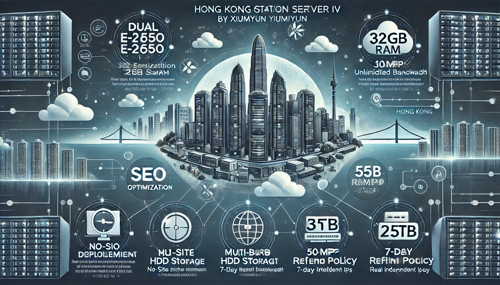
In modern network environments, the stability and accessibility of servers are crucial. Especially American servers have become a popular choice for global enterprises and individual users due to their high performance and strong technical support. However, sometimes users may experience situations where they cannot access U.S. servers. This article will explore common reasons why US servers are not accessible and corresponding solutions to help users quickly find and solve problems.
Network connection issues
Network connectivity issues are one of the most common reasons why US servers are inaccessible. If the user's local network fails, such as router problems, ISP failures, or network congestion, it will affect the server's access. First, users can troubleshoot by restarting the router or modem, and if the problem persists, they can contact the Internet Service Provider (ISP) to confirm if there is any network interruption.
Server downtime or maintenance
Server downtime or maintenance is also a common reason for inaccessibility. Sometimes, server providers perform regular maintenance or upgrades, which can result in temporary inaccessibility. If the user finds that the connection is not possible, you can confirm whether there is an announcement by visiting the service provider's official website or social media page. If it is an access problem caused by maintenance, users only need to wait patiently.
DNS resolution error
DNS (domain name system) resolution errors may cause users to be unable to access the US server. When a user enters a domain name, the DNS server converts it to an IP address. If the DNS settings are incorrect or the DNS server fails, the user will not be able to access the corresponding website. To solve this problem, users can try to change the DNS server, using public DNS services such as Google's 8.8.8.8 or Cloudflare's 1.1.1.1.
Firewall or security settings
Firewalls or security settings may also prevent users from accessing US servers. Many companies and individual users enable firewalls to protect network security, but sometimes these settings mistakenly block legitimate access requests. Users can check local firewall settings to make sure that access to a specific IP or port is not blocked. Also, check the security software settings to make sure it does not interfere with the server connection.
Overload or flow limit
When the number of visits is too high, the server may be unable to respond to the request due to excessive load. Especially during peak hours, users may experience slow connections or unavailability. To resolve this problem, you can consider accessing during off-peak hours, or selecting a server with less traffic limits. If it is a server managed by yourself, it is recommended to optimize the website performance and use load balancing technology to distribute traffic pressure.
IP blockade or zone restriction
In some cases, the user's IP address may be blocked by the server for security reasons, or the specific content cannot be accessed due to geographical restrictions. Users can change their IP addresses through VPN services and try to access the server from other regions. In addition, contacting the server provider to confirm whether there is an IP ban is also an effective solution.
Browser caching issues
Browser caching issues may also lead to inability to access the US server. The browser stores some web page data to speed up loading, but sometimes this cached data can be outdated or corrupted. Users can try to clear browser caches and cookies and then reload the page, which usually solves access issues.
Improper server configuration
If the user manages the server himself, incorrect configuration may also lead to inaccessibility. Whether it is the settings of the web server or the database connection problem, it may affect the normal operation of the website. It is recommended that users check the server configuration regularly to ensure that all settings meet the requirements and update the software version in a timely manner to avoid security vulnerabilities.
Summary and suggestions
There are many reasons why the US server cannot access, from network connection problems to improper server settings, which may cause users to be unable to access normally. When users encounter such problems, they should first check the local network and then gradually troubleshoot other possible causes. It is recommended to keep in touch with service providers regularly and obtain maintenance announcements and technical support in a timely manner. With effective troubleshooting and solutions, users can minimize the impact of access issues on their jobs and business.
- Latest articles
- reasons and solutions for thailand vps failure
- where to buy korean native ip? comparative analysis of multiple channels
- japanese vps usage tutorials and faqs
- best practices and common problems in setting up a server in singapore
- is the vietnam vps trial service experience trustworthy?
- understand the basic configuration and technical requirements of korean cloud servers
- analysis of the advantages of high-defense hard defense servers in the us market
- steps and precautions for purchasing cloud servers in vietnam
- an in-depth discussion on the stability and security of korean vps ip
- advantages and usage scenarios of alibaba cloud cambodia servers
- Popular tags
-
Large bandwidth US high-defense servers help stabilize traffic during peak periods
Discuss how large-bandwidth American high-defense servers provide stability and security during peak traffic periods to ensure the normal operation of the website. -
Detailed steps and precautions for building a US site group
This article will give detailed introduction to the steps and precautions for building a US website group to help you optimize your website smoothly. -
Detailed explanation of the US server classification table and the advantages of different types
Detailed explanation of the US server classification table and the advantages of different types, helping users choose the right server type to meet their needs.


